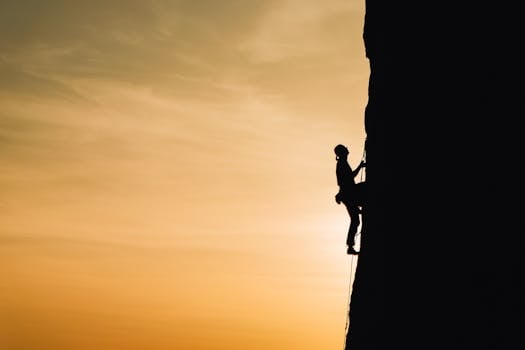Free Solo Climbing: Climbing Without a Rope, for the Bravest
Free solo climbing is one of the most exhilarating and dangerous forms of rock climbing. It involves ascending rock faces without the use of ropes or harnesses, relying solely on one’s physical strength, skill, and mental fortitude. This extreme sport has gained popularity in recent years, captivating audiences and inspiring climbers around the world. However, it also raises questions about safety, risk management, and the psychological aspects of climbing at such heights.
The Allure of Free Solo Climbing
What draws climbers to free soloing? The reasons are as varied as the climbers themselves, but several key factors contribute to its allure:
- Adrenaline Rush: The thrill of climbing without safety gear provides an unparalleled adrenaline rush that many climbers seek.
- Connection with Nature: Free soloists often describe a profound connection with the rock and the environment, experiencing nature in its rawest form.
- Personal Challenge: Many climbers view free soloing as the ultimate test of their skills and mental toughness.
- Freedom: The absence of ropes and gear allows for a sense of freedom and fluidity in movement that is hard to replicate in roped climbing.
Notable Free Solo Climbers
Several climbers have made headlines for their remarkable free solo ascents, showcasing both the beauty and danger of the sport. Here are a few notable figures:
- Alex Honnold: Perhaps the most famous free solo climber, Honnold gained international acclaim for his 2017 ascent of El Capitan in Yosemite National Park. His climb was documented in the film “Free Solo,” which won an Academy Award.
- Tommy Caldwell: While primarily known for his roped climbs, Caldwell has also engaged in free soloing, demonstrating his exceptional skills on various rock faces.
- Jimmy Chin: A renowned climber and filmmaker, Chin has captured the essence of free solo climbing through his work, including the aforementioned “Free Solo.”
The Risks Involved
While the thrill of free solo climbing is undeniable, it comes with significant risks. The absence of safety gear means that a single misstep can lead to catastrophic consequences. Some of the primary risks include:
- Falls: The most obvious risk, falls can result in severe injury or death. The higher the climb, the greater the potential for fatality.
- Environmental Hazards: Loose rocks, changing weather conditions, and wildlife encounters can pose additional dangers.
- Mental Pressure: The psychological strain of climbing without safety gear can lead to panic or poor decision-making.
Psychological Aspects of Free Soloing
The mental aspect of free solo climbing is as crucial as the physical. Climbers must maintain focus and composure, often in high-pressure situations. Research has shown that successful free soloists often possess unique psychological traits:
- High Tolerance for Risk: Many free soloists have a higher-than-average tolerance for risk, allowing them to push boundaries.
- Strong Visualization Skills: The ability to visualize each move before executing it is essential for success.
- Mindfulness: Many climbers practice mindfulness techniques to stay present and focused during their climbs.
Conclusion: The Brave Pursuit of Freedom
Free solo climbing is not for the faint of heart. It represents the pinnacle of climbing achievement, combining physical prowess with mental resilience. While the risks are significant, the rewards—both personal and aesthetic—can be profound. As climbers like Alex Honnold have shown, the pursuit of freedom and self-discovery can lead to extraordinary feats. However, it is essential for aspiring free soloists to approach the sport with respect, preparation, and an understanding of their limits. Ultimately, free solo climbing is a testament to human courage and the relentless pursuit of adventure.
